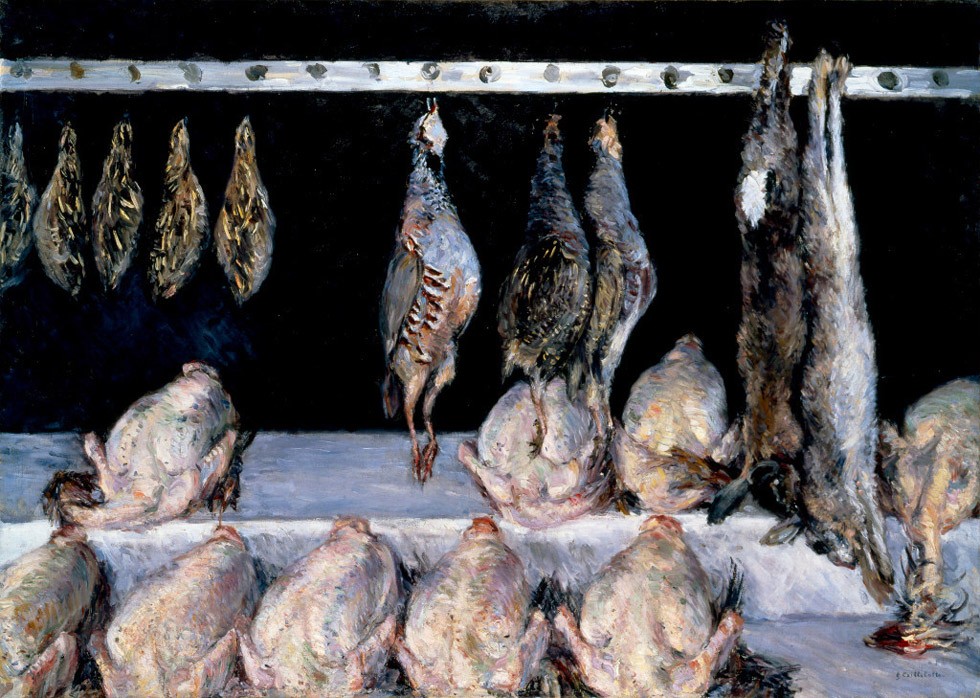When I walked into the “Food Room,” as I like to think about it, I was struck by, among many things, the sheer variety of objects that Caillebotte chose to paint and his sincere focus on their materiality, the physical presence of those things. On one of the smaller canvases, a raw hunk of beef, its seams of fat threading through the meat like streets on a map, sits isolated on a blued marble surface. Like a humble anatomical study, this cross-section view of a piece of beef resonates more broadly with Caillebotte’s interest in painting slices—literally and metaphorically—of modern life. In Chicken, Game Birds, and Hares and Calf’s Head and Ox Tongue we see the fullness of the grotesquerie of what are quite literally still lifes, natures mortes. Animal parts, game birds, and two hares dangle from hooks and chains on metal rods and plump chickens line marble shelves in butcher shops, spectacles that meld death and carnage with consumption and the artfulness of painting practice. For Caillebotte does somehow and miraculously find artfulness even here, where relentlessly anterior views force us to confront the surprising weight and density of an ox tongue and the precariousness with which the decapitated head of a calf is suspended from a small hook. They hang like uncanny fragments that simply do not go together; the elegant pathos of the head of a young animal and the grisly tongue of one, we can only imagine, far more mature. It is a veritable relief to come to Fruit Displayed on a Stand. Our eyes linger over the dusty surface of gray-purple figs and bluer blueberries, the glossy sheen of tomatoes, the coarsely mottled peels of oranges and lemons. We are like passersby who stop to admire a green grocer’s display, but our viewpoint onto this field of plenty is almost, quite unexpectedly, intimate. Pears, two types, already reveal the pale orangey-pink that indicates ripeness. The moment seems fixed; all is held in a delicate balance, distilled. We know the future of these perishable things. But for now, they are intractably perfect.
Marni Kessler
Associate Professor, Kress Foundation Department of Art History, University of Kansas
Emily Beeny
Associate Curator, Norton Simon Museum
Sarah Cash
Associate Curator of American and British Paintings, National Gallery of Art
Hollis Clayson
Professor of Art History, Northwestern University
Margaret M. Doyle
Associate Curator, Department of Exhibition Programs, National Gallery of Art
Jennifer Henel
Curatorial Associate, Northern Baroque Paintings, National Gallery of Art
Paul B. Jaskot
Andrew W. Mellon Professor/CASVA
Marni Kessler
Associate Professor, Kress Foundation Department of Art History, University of Kansas
Considering Caillebotte: Marni Kessler

Gustave Caillebotte, Chicken, Game Birds, and Hares, c. 1882, oil on canvas, private collection.
